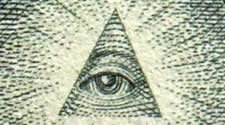 Well, this is really cute. With refreshing honesty, Fortune magazine on Sept. 14 issued a list of the "Fortune 5"—the biggest organized crime groups in the world, ranked by their annual revenue estimates. No sources are given, but the Fortune editors presumably relied on international law enforcement intelligence. The results are slightly surprising for those of us who grew up in the era of the Sicilian Mafia and Medellín Cartel. Brave new crime machines have long since eclipsed these entities from the global stage, and far outstripped their earnings from human trafficking, extortion, credit card fraud, prostitution and (above all) drug smuggling. In the number one slot, by a mile, is Yamaguchi Gumi, a wing of Japan's Yakuza, with revenue estimated at $80 billion. A distant second is Russian mafia group Solntsevskaya Bratva, with revenue at $8.5 billion. Three and four are two Italian outfits that have long superceded Sicily's Cosa Nostra: the Camorra, based in Naples, with revenues of $4.9 billion; and the 'Ndrangheta, based in Calabria, with revenues of $4.5 billion. Number five is Mexico's Sinaloa Cartel, with revenues of $3 billion.
Well, this is really cute. With refreshing honesty, Fortune magazine on Sept. 14 issued a list of the "Fortune 5"—the biggest organized crime groups in the world, ranked by their annual revenue estimates. No sources are given, but the Fortune editors presumably relied on international law enforcement intelligence. The results are slightly surprising for those of us who grew up in the era of the Sicilian Mafia and Medellín Cartel. Brave new crime machines have long since eclipsed these entities from the global stage, and far outstripped their earnings from human trafficking, extortion, credit card fraud, prostitution and (above all) drug smuggling. In the number one slot, by a mile, is Yamaguchi Gumi, a wing of Japan's Yakuza, with revenue estimated at $80 billion. A distant second is Russian mafia group Solntsevskaya Bratva, with revenue at $8.5 billion. Three and four are two Italian outfits that have long superceded Sicily's Cosa Nostra: the Camorra, based in Naples, with revenues of $4.9 billion; and the 'Ndrangheta, based in Calabria, with revenues of $4.5 billion. Number five is Mexico's Sinaloa Cartel, with revenues of $3 billion.
The Yakuza and Russian mobs have the most in common in terms of being "businesslike" and deeply ensconced in the "legtimate" economic elites of their respective nations—although the Yakuza goes back centuries to the Edo period, when Japan was under the rule of the shoguns, whereas the Russian syndicates emerged from the decadent period of the 1980s, when the Soviet system was in decline and increasingly riven with corruption.
The 'Ndrangheta, based in Italy's traditional backwater of Calabria, has risen to a global crime machine since cashing in on the heroin networks that fueled all sides in the wars of ex-Yugoslavia across the Adriatic Sea from southern Italy 20 years ago. Italian authorities launched a crackdown four years ago after the 'Ndrangheta was blamed for a bomb attack targeting a prosecutor in Reggio Calabria, the regional capital. But the organization has obviously weathered the storm.
In 2011, a White House Executive Order named four global criminal groups as international threats: the Yakuza (although it is really a collection of organizations, some mutually hostile), the Camorra, the Brothers' Circle of Russia and the Zetas of Mexico. The fact that the "businesslike" Sinaloa Cartel (bigger than the Zetas, if not as violent) was left off the list further fueled the widespread conspiracy theory in Mexico that the US and Mexican governments are protecting the Sinaloa machine. The arrest earlier this year of long-fugitive Sinaloa kingpin Joaquin Guzmán Loera AKA "El Chapo" has hardly quelled such theories, as claims have emerged that the US Border Patrol helped smuggle arms for the Sinaloa Cartel's enforcement gangs.
It is nice to see Fortune ranking these organizations as the capitalist enterprises that they are. Hopefully this will raise a little awareness that the prohibitionist model has merely fueled their growth and given them a source of endless untaxable revenue. Fortune actually cites an Organization of American States report (PDF) as estimating that revenue for cocaine sales in the US has reached $34 billion annually. Overturning this model isn't a magic bullet—these cartels now have enough money and power to survive on their various illict sidelines. But it is the necessary first step in undermining them. Two generations of the "War on Drugs" has only seen them hypertophy.
Cross-post to High Times
Photo by Hammer51012







Recent comments
2 weeks 2 days ago
6 weeks 17 hours ago
10 weeks 22 hours ago
10 weeks 6 days ago
20 weeks 6 days ago
24 weeks 6 days ago
26 weeks 3 hours ago
26 weeks 6 hours ago
47 weeks 18 hours ago
51 weeks 1 day ago